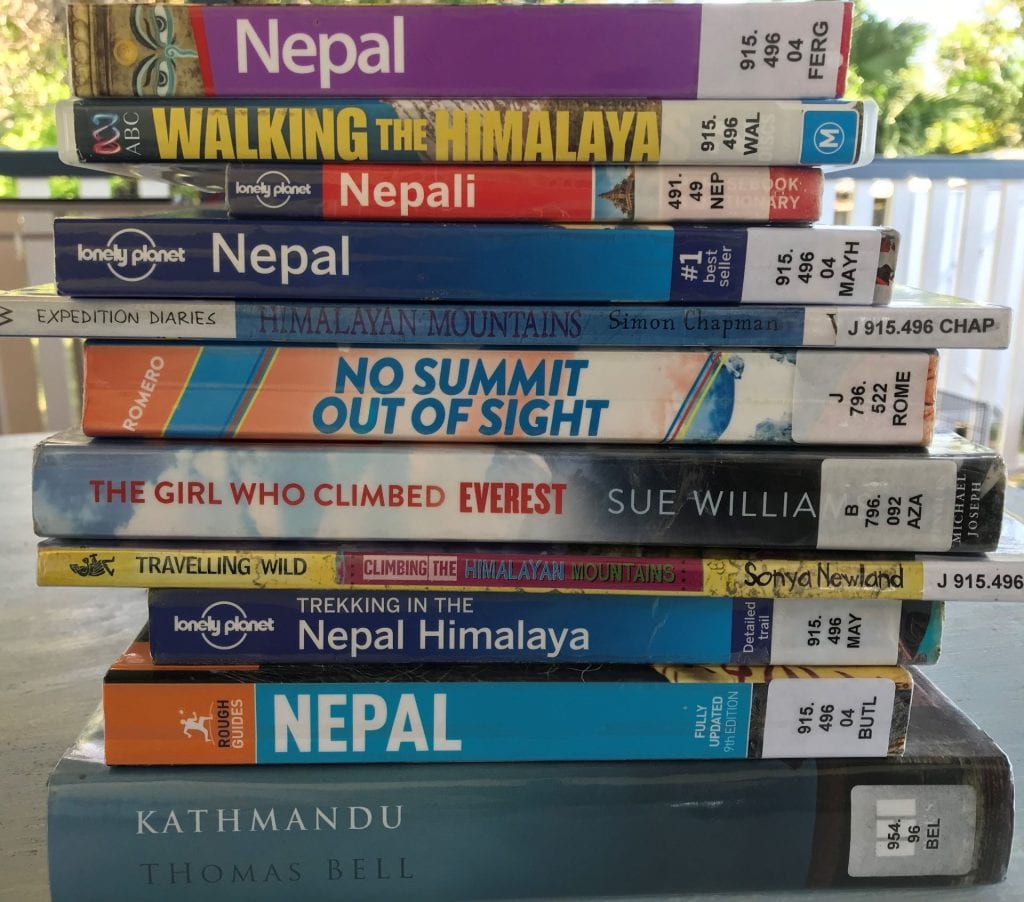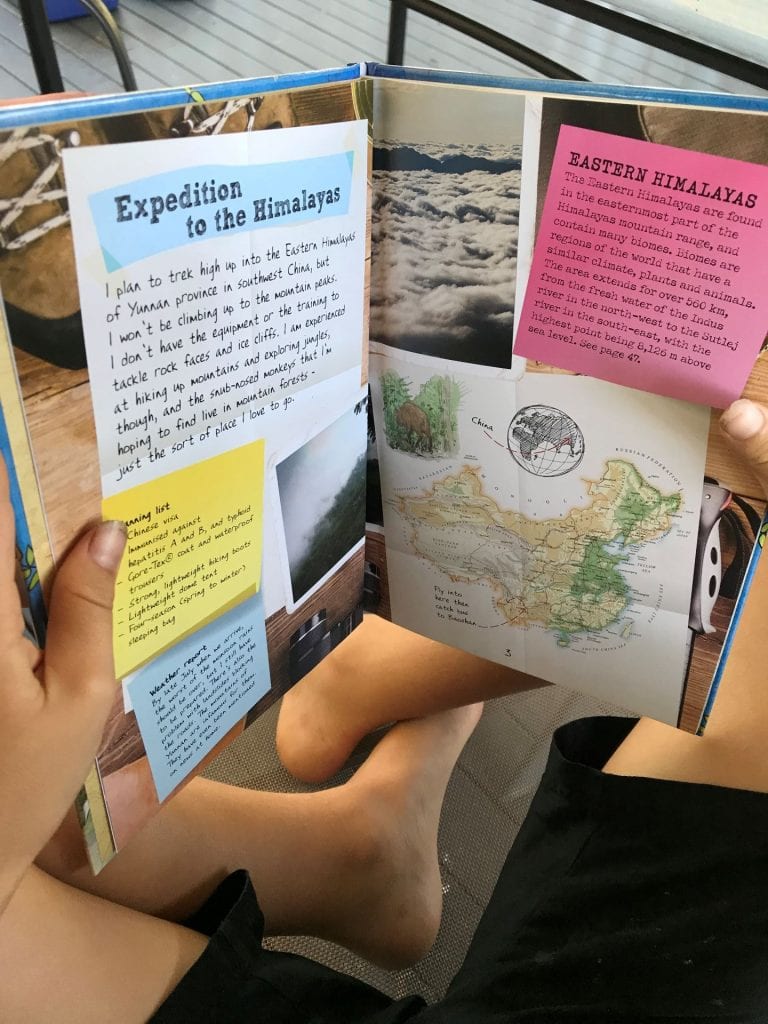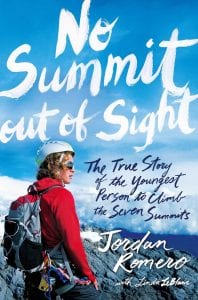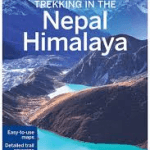This is a Nepal in Motion post 🙂
Big adventures need lots of research and planning, so obviously we are going to cover oodles of English outcomes 🙂
Need to book things, find out things, from websites, books, blogs, maps, government offices, from chatting, from groups, social media, from shared experience…but it’s BOOKS we are going to focus on in this post 🙂
The library has been the place to find lots of books about our adventure. From travel guides, phrase books, travel diaries, geographic and cultural informational texts, we have a lot of book reading to enjoy!
My daughter is a book worm, and absorbs so much from reading a diverse range of texts. My son a book avoider. He will happily surf the internet researching heaps about every airline /type of plane we can fly internally in Nepal, how much, where, cost, how many seats on the plane, chance of survival lol…and can give us a pretty persuasive argument to choose a plane instead of the 8 hour bus journey we need to take to Pokhara….because planes are his passion and he really wants to go on a plane in Nepal. This covers lots of English outcomes! But when it comes to books….other than plane books, recipe books (cooking is his other passion), oh and the Treehouse series…that’s about it, and of course no matter how much I leave other books in his path to ‘diversify’ his reading, he might skim the pictures, but that’s about it.
I have an avid reader, and a not so avid reader. Nothing wrong or right with either of them, that’s just how they are.
When our kids are toddlers, and can’t read yet, we read to them so much! It’s how they eventually learn to read themselves. As they grow older, there is this expectation that they read themselves to grow their comprehension and vocabulary, and understanding of the world. Set texts are given to them to scaffold this process. Unfortunately not all kids are ready to achieve specific English outcomes at specific times, and if the ‘set texts’ have no meaning to them at that particular time there is going to be no interest, and the skill that has been so carefully sequenced by our curriculum writers for them to acquire with that text is going to be missed.
If I want my non avid reader to increase comprehension and vocabulary from a diverse range of texts, be aware of different styles and forms of writing, learn informational knowledge or biographical wisdom, I’m going to have to read them out loud, just like I would have when he was younger.
The beauty of learning together from home, is that we do have the time to sit down together, get comfy on the couch (often this is upside down for the kids), sometimes the kids might be also fiddling with goo, or colouring in something for our wall, and then just read together. As soon as a book is opened and we find our comfy spot, there is a natural calm, they are listening, we go on the journey of the book together, we stop to talk about anything that triggers anything, we are making personal and meaningful connections with the text together. Something in the book might stir a past memory, or future insight of our own journey.
This junior information book ‘Expedition Diaries: Himalayan Mountains’ has been cool, as it is about China’s Yunnan section of the Himalaya, a province we have explored many times and not far from our hike earlier this year through Tiger Leaping Gorge. The kids were unaware we had already been so close to the Himalaya, and how far they actually range! The scrapbook / post it note /highlighter layout has given them some ideas of how they might write their own ‘expedition diary’. Little interesting notes about planning, earthquake tips, animal sightings, transport mishaps, getting lost, language problems…this book is really ‘intrepid’ for kids 🙂 My non-avid reader enjoys the pictures in this book, but won’t take the time to read all the captions…so reading together allows us to talk about the diary, and how our potential diary might be written.
The book ‘No Summit out of Sight’ is a Junior book, written by the youngest boy ever to climb the highest mountain on every continent. Because it is a junior book, from his perspective, the kids have enjoyed hearing about this boys experiences of goal setting, travelling, fund raising, cultures and environments as he lands in each country, the red tape, beaurocracy and politics of the different countries, the different gear and training he has needed for the different types of mountain, supporting charities, developing in maturity on his journey…each section sparking excited conversation about what we will need for our journey. (Also maths involved as it is an American book and all the mountain talk is in feet…we have had to convert to metres every time!)
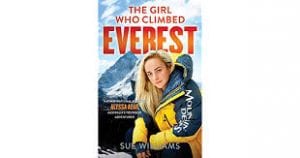 This book ‘The girl who climbed Everest’ about the youngest Australian girl to climb the mountain, has been really good to read as she comes from Toowoomba just a few hours down the road from us 🙂 This is an adult book, written by an author who writes about the lives and experiences of not just Alyssa, but her family and friends. As it is not completely from Alyssa’s perspective, my 11 yr old non-avid reader has thrown out a few ‘this is a boring part’ in the parts where it goes on about the adults, but quickly switches back on when the author switches to the quotes from Alyssa, about the young girl’s amazing journey to her adventures and achievements. Judgements and school / social media bullying have been talked about lots in this book, and have sparked lots of conversations about being different and fitting in, so important to talk about with our teens. My 13 year old daughter at a different stage of development, has been very interested in every aspect of this girl’s story.
This book ‘The girl who climbed Everest’ about the youngest Australian girl to climb the mountain, has been really good to read as she comes from Toowoomba just a few hours down the road from us 🙂 This is an adult book, written by an author who writes about the lives and experiences of not just Alyssa, but her family and friends. As it is not completely from Alyssa’s perspective, my 11 yr old non-avid reader has thrown out a few ‘this is a boring part’ in the parts where it goes on about the adults, but quickly switches back on when the author switches to the quotes from Alyssa, about the young girl’s amazing journey to her adventures and achievements. Judgements and school / social media bullying have been talked about lots in this book, and have sparked lots of conversations about being different and fitting in, so important to talk about with our teens. My 13 year old daughter at a different stage of development, has been very interested in every aspect of this girl’s story.
Guide books are another type of book we will read together, the layout is often not appealing to kids! Detailed notes of the route we plan to take are in several guide books, we will read together down the track as we research routes from other blogs, and plan our own routes through google maps etc. Lots of exciting reading to come 🙂
Australian Curriculum Outcomes
This is from the ‘Understand how the literacy progression works’ sub section of ‘Listening’ :
This sub-element describes how a student becomes increasingly proficient at building meaning from a variety of spoken and audio texts. It includes active listening processes to access and understand the increasingly sophisticated language structures of spoken texts for audiences and purposes specific to learning area requirements.
From this many of the ‘outcomes’ are encountered, but in our home situation I don’t have to set a worksheet or a task to prove or justify the outcome has been acheived. The outcomes are just happening, not necessarily in the yearly order set, not like when a teacher prescribes a set outcome to be assessed, the opportunities to experience the learning in each outcome just naturally occur.
After some reading sessions together, whether fiction or information books to prepare for any project or adventure, have a peruse through the English outcomes, and you will find one or two that just ‘happened’ through the osmosis of reading and the subsequent deep chats together 🙂
